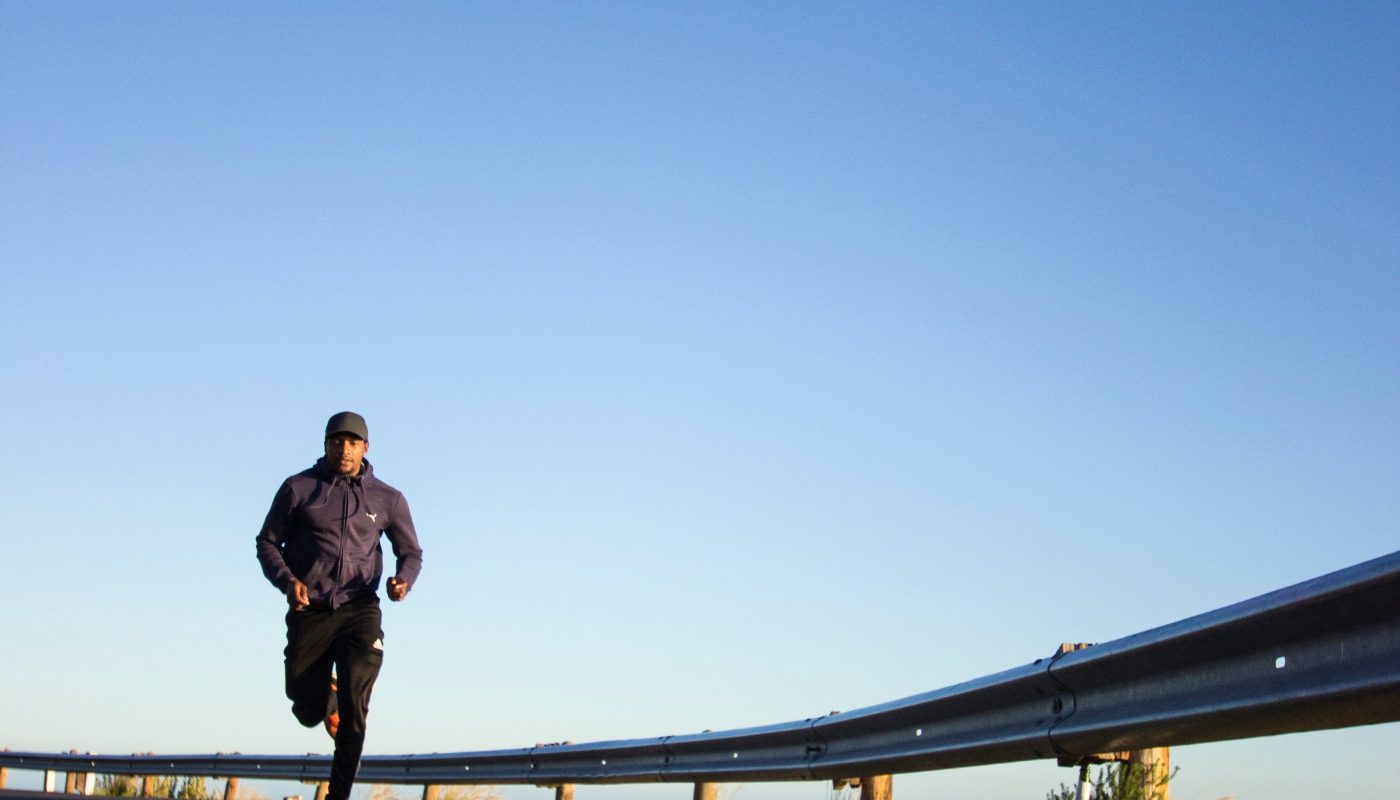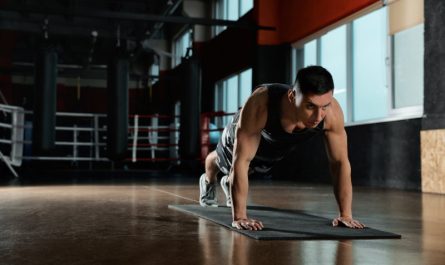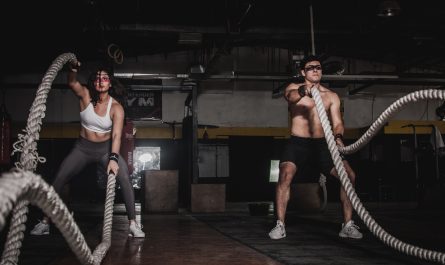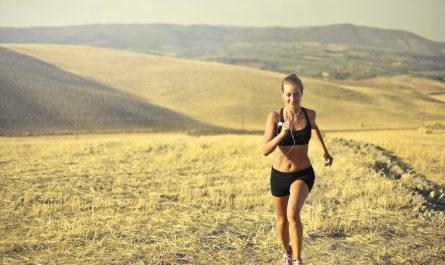TikTokers claim making the about face turn doubles the calories burned compared with forward running.
Running has long been considered one of the most efficient, convenient, and beneficial workouts. But some claim you get more out of the classic way of exercising with a new technique — or rather a 180-degree about-face.
Hashtag #runningbackwards has already amassed 1.2M views on TikTok, with #reverserunning (112.4K views), #backwardrunning (102.1K views) and #runbackwards (471K views) also on the rise.
TikTokers, including Antonio “LionOfGod” Gillespie (@prolongevityfitness, 30.3K followers), a certified fitness trainer and founder of Prolongevity Fitness, are hyping up the benefits of reversing your run.
“The longest I have run backwards is eight miles,” he proclaims at the start of a video with 258K views and 47K likes.
He goes on to explain that reversing your run, “works your opposite muscle groups, which means your quads and your shins.” Other benefits, he says: “stronger and more enduranced base.”
And he says it burns 2 to 3 times the calories as conventional forward running (eight miles backwards equates to 16 to 24 forward, he says), conditions the heart 2 to 3 times over, strengthens the back and core 2 to 3 times more, increases mental fortitude, and also improves breathing efficiency.
In another video shared by @nodaysoff with over 462K views, one runner even takes the concept to the treadmill.
Other influencers, including @blondlocs and @arthenixs also maintain that reversing their run is reaping them tons of benefits.
Can the backwards turning really do all that?
What Is Reverse Running (or Backward Running)?
Frankie Ruiz, a longtime cross-country running coach and chief running officer and cofounder of the Life Time Miami Marathon, explains that aside from moving in reverse, backwards running differs from regular running because it requires an entirely different combination of things to do correctly (such as form, technique, and muscles you’re engaging).
“One might say it shouldn’t even include the word running and be given some other activity descriptive term,” he notes.
While the goal is still the same as forward running, the action of running backwards involves a relatively coordinated movement of the body to progress through space while at least one or both feet leave the ground below.
“Reverse running (also referred to backwards running or retro running) is achieving the same thing but the front side of the body is facing the opposite direction,” he adds.
Ruiz says that the idea has been around for years with many sports using the method as a warm-up and agility practice. “Several endurance athletes at all levels use reverse running as rehab especially after injury to the knees or hips. The stress is better distributed, so the movement is sometimes prescribed as a way to ease back into aerobic conditioning,” he notes.
Elizabeth C Gardner, MD, associate professor and orthopaedic surgery head team physician at Yale University, adds that Robert Stevenson, MD, was one of the first to formally write about it in his 1981 book Backward Running.
What Experts Say About the So-Called Benefits of Backward Running
Ruiz explains that reverse running offers a slightly different set of benefits than regular running, especially for those practicing forward running for a long time. While the aerobic benefits will be similar, the muscles called on to do the work will differ.
“[That’s] simply because you are using mainly your leg muscles differently,” says Ruiz.
A similar effect would occur if you were changing the volume or intensity of your forward running or running uphill versus downhill. A study published in 2016 in the Journal of Strength and Conditioning backs this up. Researchers found that running backwards benefited athletes by improving their running economy; by running backwards over time the athletes became better runners overall. (Note that the study only included eight highly-trained male runners.)
Unlike forward running, which generally uses the muscles in the front of the leg (like the quads and anterior tibialis), reverse running primarily uses the muscles of the posterior chain, especially the calf muscles and glutes Dr. Gardner adds. “Within just a minute or two of reverse running, you’ll start to feel the burning in your calves!”
Running backwards may also be easier on the knees for this very reason. “In a backwards movement, the set of muscles involved in absorbing the impact in the lower level are opposite. Your lower leg muscles are doing most of the absorbing, thereby placing less stress on the knees. Reverse running will recruit lesser utilized muscles resulting in muscle growth and toning,” says Ruiz.
A study published in 2012 in the Journal of Biomechanics found that reverse running reduced impact on the knees compared with running forward. (The small group of moderately active people in the study did not have any recent knee pain or injury.)
In addition to utilizing different muscles than running forward, reverse running enhances balance and posture, “as it forces you to stay in a more upright position,” Gardner says.
As to claims that running backwards can burn more calories than forward running, Gardner says it’s not so black and white.
Lots of factors (including heart rate, age, and others) affect how many calories you burn during any particular activity. “Different muscle pattern usage doesn’t necessarily burn more calories. It is the intensity that matters most,” she points out.
Because running backward induces more muscle activity than running forward, however, she notes it makes sense that one might burn more calories. And some research (again, this study was a small one, too, of only 26 people) suggests backward walking or running reduced body fat more than forward exercise; but there’s not conclusive data on exact calorie expenditure differences.
As for the purported benefits in terms of boosting brain power and cognitive function, Ruiz says it’s probably similar to the brain stimulating benefit you get from other types of technical running (like on a trail where you need to pay attention to stones and terrain changes).
Some Caveats About How to Safely Run Backwards if You Try It
Luka Hocevar, National Strength and Conditioning Association–certified strength and conditioning coach, founder of Vigor Ground Fitness and Performance, and C4 Energy brand ambassador, suggests that those who are new to running or don’t feel comfortable with coordination should consider starting with walking backwards.
Ruiz suggests practicing in an open, level field or track. “Like regular running, the main thing is to be gradual in your volume and intensity loading,” he says. He suggests starting with a short duration and mixing it in with your regular running schedule. “One might do it for a lap on the track to warm up for regular running then start adding time as you get used to after several weeks,” he advises.
Also, you need to consider transitions, Derek Pratt, International Sports Sciences Association–certified personal trainer, points out. “It is very difficult to transition from backwards running to forward running without stopping. You are using different muscle groups and your body needs to change directions quickly.”
As Ruiz mentioned, avoid backward running on uneven terrain. Also, avoid high traffic areas, as it can be difficult to see what is going on behind you. Gardner suggests enlisting a running buddy’s help if you try it, so you can spot each other.
Who Should Try Running Backwards (and Who Should Avoid It)?
Any type of athlete can benefit from reverse running, says Gardner. Once cleared to exercise again, athletes recovering from knee injuries may find reverse running much easier on their joints, she says. Boxers, she notes, have long been fans of running backwards, as it is both excellent cardiovascular exercise and promotes balance.
However, there are risks of injury in running backward. A big one, according to Pratt, is running into something or falling down. “It is good to know how to fall backward without hurting yourself as well as to prepare for the worst just in case,” he says. And try it with a partner, as Gardner suggested, if that’s an option.
Also, as with any new exercise, there are some people who might need to get approval by their doctor. “If you have any pain or injury with the ankle, knee, hip, or low back, make sure you consult a doctor first before starting running backwards,” adds Hocevar.
The Bottom Line on Backward Running
While many TikTok trends don’t live up to the hype, running backwards might actually up your running game. As long as you start slow and take necessary precautions, there is no reason why you shouldn’t add it to your running routine. Does it count for twice the miles that forward running does though? There’s no hard evidence of that.




